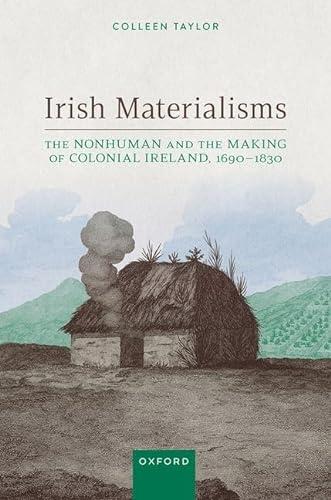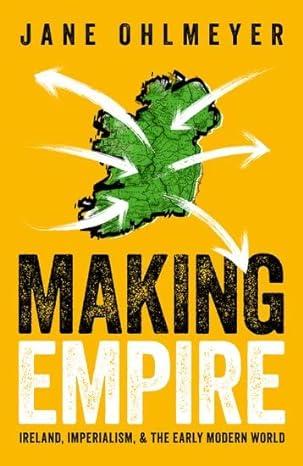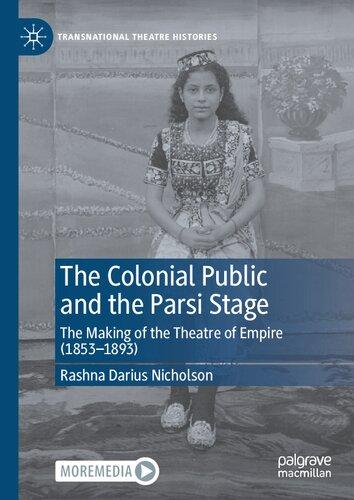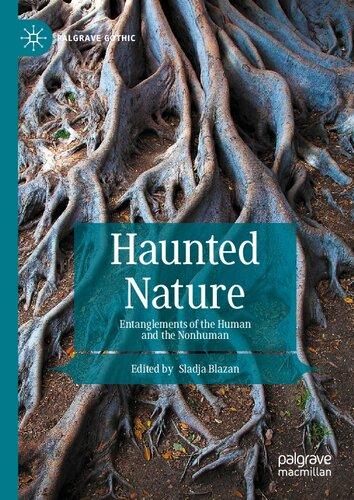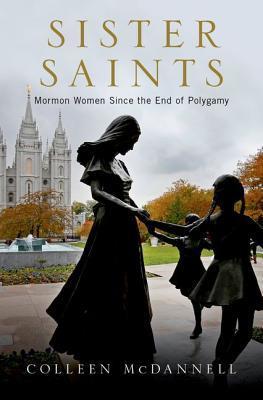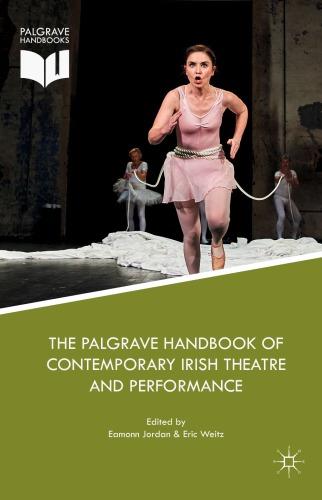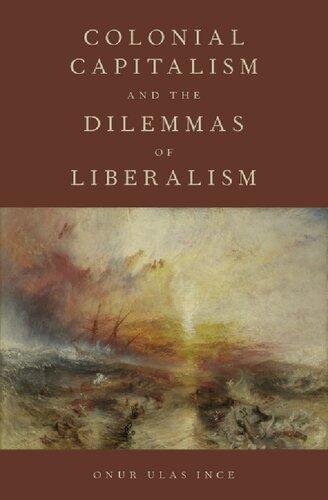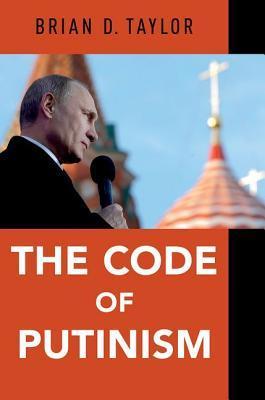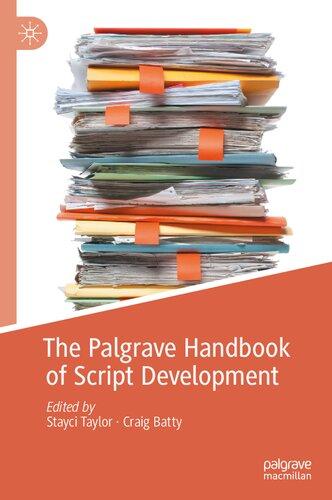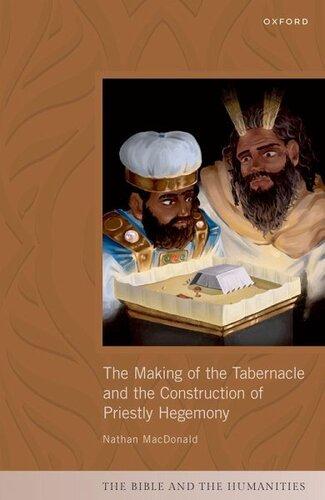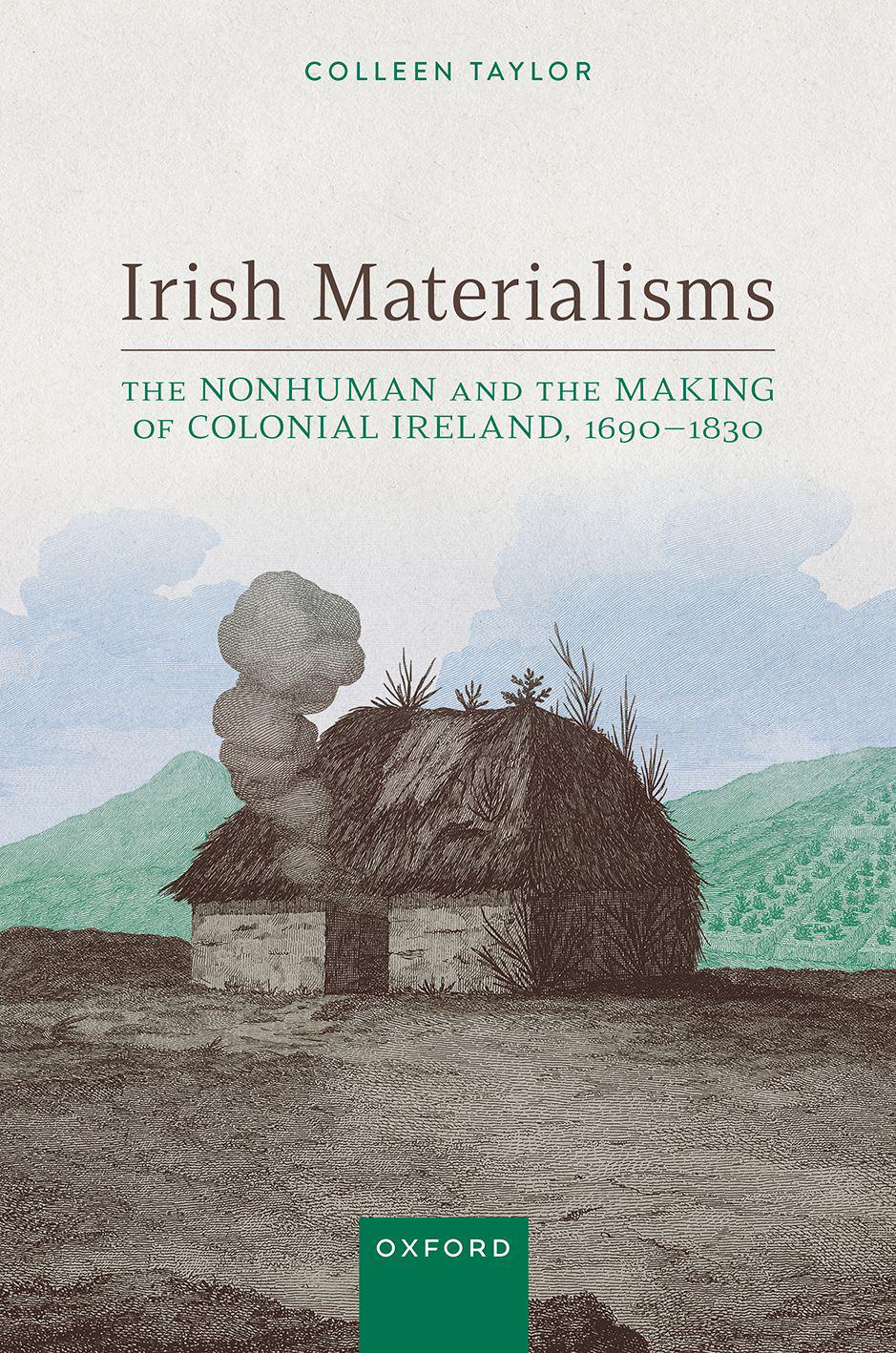List of Illustrations
1.1 Wood’s Halfpence, 1723, copper. Reproduced with the kind permission of the National Museum of Ireland. Photograph by Paul and Bente Withers, Galata Print Ltd, Llanfyllin, Wales.
1.2 Bank of Ireland Six Shilling Coin, 1804, silver. Reproduced with the kind permission of the National Museum of Ireland. Photograph by Paul and Bente Withers, Galata Print Ltd, Llanfyllin, Wales.
1.3 William Heath, March of the Liberator, 1828, etching, hand-colored on paper. Image courtesy of The Board of Trinity College Dublin.
1.4 James II Gunmoney, Thirty pence coin, September 1689. Reproduced with the kind permission of the National Museum of Ireland. Photograph by Paul and Bente Withers, Galata Print Ltd, Llanfyllin, Wales.
1.5 Limerick Coinage, 1691, overstruck James II gunmoney. Reproduced with the kind permission of the National Museum of Ireland. Photograph by Paul and Bente Withers, Galata Print Ltd, Llanfyllin, Wales.
31
31
32
33
34
1.6 William Hincks, Hibernia attended by her Brave Volunteers, Exhibiting her Commercial Freedom, 1780. Reproduced courtesy of the National Library of Ireland. 38
2.1 William Hincks, ‘This Plate representing a Perspective View of a Scutch Mill, with the Method of Breaking the Flax with grooved Rollers, and Scutching it with Blades fixt on a shaft, both turn’d by the main Wheel. Great Improvements in the Method of Breaking and Scutching of Flax,’ Plate V, The Irish Linen Industry, 1783, paper print, etching and stipple. Reproduced from the original held by the Department of Special Collections of the Hesburgh Libraries of the University of Notre Dame.
2.2 William Hincks. ‘This Plate representing a complete Perspective View of all the machinery of a Bleach Mill, upon the Newest and Most approved Constructions, Consisting of the Wash Mill, Rubbing Boards moved by a Crank, and Beetling Engine for Glazing the Cloth, with a view of the Boiling House,’ Plate IX, The Irish Linen Industry, 1783, paper print, etching and stipple. Reproduced from the original held by the Department of Special Collections of the Hesburgh Libraries of the University of Notre Dame.
83
84
2.3 William Hincks, ‘Representing Spinning, Reeling with the Clock Reel, and Boiling the Yarn,’ Plate VI, The Irish Linen Industry, 1783, paper print, etching and stipple. Reproduced from the original held by the Department of Special Collections of the Hesburgh Libraries of the University of Notre Dame. 85
2.4 Suitors to Hibernia on her having a Free Trade, 1780, published by J. Mills, paper print, etching. © The Trustees of the British Museum.
2.5 Tools for a Flax-Dresser Including A & B, ‘Scutching-Board,’ C, ‘Scutchinghandle . . . made four times larger’ and D ‘The Knife,’ 1734, Appendix to Samuel, Louis Crommelin, An Essay Towards the Improving of the Hempen and Flaxen Manufactures in the Kingdom of Ireland, p. 56. Reproduced courtesy of the National Library of Ireland.
2.6 William Hincks, ‘A Plate representing the common Method of Beetling, Scutching, and Hackling the Flax,’ Plate IV, The Irish Linen Industry, 1783, paper print, etching and stipple. Reproduced from the original held by the Department of Special Collections of the Hesburgh Libraries of the University of Notre Dame.
2.7 William Hincks, ‘This Perspective View of a Bleach Green, taken in the County of Downe.’ Plate X, The Irish Linen Industry, 1783, paper print, etching and stipple. Reproduced from the original held by the Department of Special Collections of the Hesburgh Libraries of the University of Notre Dame.
3.1 Dorothy Distaff, Abigail Spinning Wheel, Eleanor Reel, 1720. The Female Manufacturer’s Complaint, Being the Humble Petition of Dorothy Distaff, Abigail Spinning-Wheel, and Eleanore Reel, &c, Spinsters, to Lady Rebecca Woollpack (London: Boreham, 1720), p. 19. Rare Book & Manuscript Library, University of Illinois at Urbana-Champaign.
3.2 Sarah Leech, 1828. Frontispiece to Sarah Leech, Poems on Various Subjects (Dublin: J. Charles, 1828) Reproduced courtesy of the National Library of Ireland.
3.3 For Strength and Durability, Barbour’s Linen Thread, 1894, advertisement, Barbour’s Prize Needlework Series. Reproduced courtesy of the National Library of Ireland.
4.1 Arthur Young, Construction of an Irish Cabin, 1780, pen and wash drawing, extra-illustrated manuscript copy of A Tour In Ireland, 1780. Reproduced courtesy of the National Library of Ireland.
86
89
91
95
110
124
141
149
4.2 Mayglass Farmstead, thatch and cob two-storied farm house in Co. Wexford, circa early 1700s. Photograph courtesy of the Heritage Council, Ireland. 151
4.3 Arthur Young, An Irish Cabbin, 1780, sketch, engraving on print, Frontispiece, Tour in Ireland, vol. 2, 1780. Reproduced courtesy of the National Library of Ireland.
4.4 Arthur Young, An Irish Cabin, 1780, pen and wash drawing, extra-illustrated manuscript copy of A Tour In Ireland, 1780. Reproduced courtesy of the National Library of Ireland.
5.1 W. Oldham and Harrison Weir, The Old Irish ‘Greyhound Pig’, illustration on wood. In H. D. Richardson, Domestic Pigs: Their Origin and Varieties (London: Orr & Co., 1852), p. 48. Reproduced courtesy of the National Library of Ireland.
162
163
187
5.2 John Tenniel, The Pig and the Peer, Punch [London], 7 August 1880. Punch Cartoon Library/TopFoto.
5.3 John Derricke, ‘The Mac Sweynes seated at dinner and being entertained by a blind harper,’ Image of Irelande. Facsimile of 1581 woodcut (printed Edinburgh: A. & C. Black, 1883). Reproduced from the original held by the Department of Special Collections of the Hesburgh Libraries of the University of Notre Dame.
191
192
5.4 James Gillray. United Irishmen upon Duty, 1798, etching, hand-colored on paper. © National Portrait Gallery, London. 196
5.5 ‘An Elegant Frontispiece, Descriptive of a Literary Pig-sty, with the Author Deep in Study’ in Nicholas Hoare, The Life and Adventures of Toby, the Sapient Pig, with his Opinions on Men and Manners, Written by Himself (London: Lyon, 1817). © The British Library Board.
5.6 John Fairburn, The Pig-Faced Lady of Manchester Square, 1815, broadside, ephemera. © The British Library Board.
198
200
5.7 Percy Metcalfe, Halfpenny, Leath Phingin, bronze, 1928. Irish Free State coin. Reproduced with the kind permission of the National Museum of Ireland. Photograph by Paul and Bente Withers, Galata Print Ltd, Llanfyllin, Wales. 214
Preface: Retrieving the Colonial Past
In 1875, a young man traveled from Kilballyowen, a farming parish on the western tip of Clare, to Cobh, County Cork, where he set sail for America. His eldest brother had recently led the Fenian Rising at Loop Head Lighthouse and swiftly escaped to New York. Following his brother’s oceanic trail, this young man left behind his parents, sisters, brother, cousins, a small mud-walled cabin and thatched roof, some chickens, pigs, and a romantic view of green fields against the Atlantic. Several weeks later, he arrived in the growing town of Danbury, Connecticut, with only a few coins in his pocket.
Danbury was a world of commodities: apartments, markets, railroads, and, most importantly, hat factories. This young man would work in those factories and study the trade by candlelight. In time he would earn a reputation as one of the best hat dyers in the United States and even build a hat factory of his own. Decades later, his eldest son would buy a diamond ring for his fiancé. His Danbury-born children and grandchildren would know Clare only in name—not the mud walls or the thatch or the pigs—but simply that place from the past with the lighthouse, shrouded in mystery. They would never live off the land like their Irish family had. They would buy their houses and their clothes instead. They would be Americans.
The young immigrant who traveled from the earthly environment of Kilballyowen to a marketplace of textiles, dyes, and hats in Danbury, Connecticut, was Michael Francis Delohery, founder of the Delohery Hat Company. He is no longer famous, and his story is not exceptional in the grand scope of history. In fact, this is perhaps the most familiar story in American lore—the dream of rags to riches—and that is exactly the point. I invoke Michael Delohery’s story here as a concrete, material example and because he is my great-great grandfather.
In writing this book I have come to know Michael, his lineage, and the material world from which he and his family were descended—a world haunted by famine and the colonial legacy of the penal laws against Catholics, a world of imperial oppression, hardship, and poverty. And yet in that sparse and natural material world, I have found creativity, resistance, and great depth. In my tour through the material world of eighteenth- and nineteenth-century colonial Ireland, Michael Delohery and his ancestors have gone from being names mentioned at family dinners to complex characters.
It is not fashionable to begin a critical academic study with a personal history. It is even less fashionable for a fourth-generation Irish-American to wax lyrical
about the old country. But I invoke it here because it matters—not just to my family but to this book’s methodology. When Michael died in 1927, the Danbury newspapers lauded him as one of Connecticut’s finest businessmen, skilled in fine hats, dyes, and textiles, while back home in Clare, his brother, sisters, and cousins were still caricatured as rustic Paddies living in mud and thatch, akin to the way they had been depicted a century prior.1 Although they contain clues, these periodicals and other written archives ultimately truncate the story of the Deloherys and so many families like them in Ireland and other colonies.
Irish Materialisms seeks to amend some of these omissions, to look closely at materiality in order to texturize and add layers to the history of colonialism and its forgotten, silenced citizens. It contends that we can find further understanding and character in the materiality of the past—the objects and resources that people interacted with on a daily basis, from the average native peasant to the colonial elite that wrote the novels and histories we read today. What follows is about Irish literature and culture of the long eighteenth century, and it is also about the democratizing and narrative power of materiality. It is about how something as small as a coin or pervasive as mud can hold stories that detail the experiences of individuals who did not qualify as protagonists in novels and who were not given the space to record their experiences in the pages of newspapers or travel writing.
What I now know about Michael Delohery comes from stories told (and embellished) by my grandmother and from the Connecticut newspaper archives celebrating the Irish immigrant boy-turned-businessman. But as for Michael’s parents, grandparents, and great-grandparents dating back to the eighteenth century, very little documentation exists because the Deloherys were Catholic and spoke Irish. For scholars today, the eighteenth century is an attractive research topic: it witnessed the triumphs of republicanism, the rise of the novel, the Enlightenment, the advent of scientific experiment, industrialization, what we now call the Anthropocene, and of course, the slave trade and imperial expansion.2 For as loud, discursive, inventive, and destructive as the long eighteenth century was in Britain and the Continent, there is silence across the Irish Sea—things we do not and cannot know about so many people who lived in Ireland after the defeat of the Gaelic Order in the late seventeenth century and before the Great Famine and the immigration of millions of Irish to North America, between 1690 and 1840, roughly.
The decline of native, Gaelic bardic poetry following the Flight of the Earls (1609) and the Wild Geese (1691) from Ireland in the wake of military defeat to British armies means that native, Irish-language records of the colonial experience in this century are sparse, often limited to manuscript circulation or the few
1 ‘Michael Delohery Dies in Danbury: Hat Manufacturer, Once an Immigrant Boy, Won Wide Success,’ The Bridgeport Telegram, 16 April 1927, p. 8.
2 See Dipesh Chakrabarty, ‘The Climate of History: Four Theses.’ Critical Inquiry 35.2 (2009).
remembered, preserved oral poems from that period, whose lyrical beauty is now accessible to even fewer Irish-speaking scholars.3 While the late eighteenth century saw a renewed interest in native Irish culture from Anglo-Irish elites sympathetic to Irish nationalism, those literary forms were nevertheless confined to the lucky few who had the means to compose and document their expressions. The cultural life of native, Irish-speaking, Catholic tenants, oppressed under Britain’s penal laws, was therefore hidden and lost over the course of this century, submerged in what were known as hedge schools (secret, outdoor classrooms for Catholics) and orally transmitted among other Irish speakers, gradually muffled by the distance of generations, the loss of famine, and the expanse of the Atlantic Ocean.
As with so many other colonies in the eighteenth and nineteenth centuries, Ireland before the 1845 Famine appears hazy now—a strange, different, and more populous island, irrevocably altered by mass emigration and death. Our limited and typically monoglot cultural access restricts our historical understanding to the perspectives and experiences of the English, Anglo-Irish, and imperial elites, who had the privilege and the means to record their lives and ideas. But this book contends that, in the absence of written records, a more comprehensive story of eighteenth-century Ireland and its peoples can be retrieved, piecemeal, through material objects. Although we cannot read their diaries or letters, the disenfranchised, poor, Irish-speaking, and Catholic peoples of eighteenth- and earlynineteenth-century Ireland emerge in shadowed format in English-language writing about Ireland in that long colonial century. And they were material beings; they possessed and handled things. Placed together, the remaining literature and the material objects of eighteenth-century Ireland dialogue and create a new discourse that adds depth and more complex subjectivity to the poor, peasant characters of colonial Ireland, who might otherwise be seen as caricatures in the remaining literature and artwork today.
This book approaches different kinds of matter as cultural remainders of lost experiences in order explore the experience of native, colonial, and peasant characters through the details of local materiality. My research practice of locating narrativity in material facts offers Irish and other cultural studies a means of new postcolonial revision. By reading literature through the material archive—the objects and materials that every average Irish tenant, literate or not, handled— this book seeks a more complete, egalitarian understanding of Ireland, albeit in material fragments. I suggest that these ostensibly ‘silent’ objects and materials can fill some historical and literary silences, point back to unheard echoes from Ireland’s mysterious eighteenth century.
3 One of the most important collections of preserved Irish language poems and their translations is An Duanaire, Poems of the Dispossessed 1600–1900, ed. Sean Ó Tuama and Thomas Kinsella, first published in 1981. Preface:
In the face of overwhelming loss, unknown pasts, and painful histories, so many of us are left only with materials: keepsakes, a bit of soil, a garment, a portrait. But these are not strictly ‘silent’ remnants of a once vocal, expressive life. These objects are not mere artifacts or pieces of evidence from which we humans extract clues. They are active meaning makers in their own right. Through interaction and study, we can come to hear and intuit matter’s narrativity. The ring snug on my finger now, given by Michael’s son, James, to his bride, Rose, in 1914, narrates this: born shortly after the Famine, Michael Delohery inherited colonial subjectivity and found independent success. His eye for color and his knowledge of material texture were rooted in west Clare’s bright pigments of blue sea, green grass, and thick, dark soil. In many ways, the following pages began with Michael. As I wrote them, I thought about his legacy: my fearless, proud Irish grandmother and my mother who was crafty with fabrics too and put bright blues and greens in the quilts she made. My family history is bookended by linen and mud on one side, hats and dyes on the other, and now, the pages of this book. These things speak to me, fill in gaps that add depth and detail to the otherwise clichéd immigrant story of Michael Delohery and the running family jokes about the Rising at the lighthouse.
My hope is that what follows can have a similar, deepening, texturizing effect for the study of colonialism, eighteenth-century writing, and national and cultural identities of all colors and materials. This book uses Ireland—that Romantic, so-called ethereal realm of ‘saints and scholars’—to ground colonial history back into its material roots. It returns to the resistance and creativity carved out in Irish matter, which has been waiting to tell its story.
Introduction
Postcolonial New Materialism and Nonhuman Narrativity
The main characters in this book are five nonhuman objects: coins, flax, spinning wheels, mud, and pigs, carefully chosen as case studies in colonial culture and thought.1 These objects were common, everyday items in colonial Ireland, encountered by all classes in Irish society, from dispossessed, nomadic farm laborers to the Anglo-Irish Ascendancy of the ‘Big House.’ They were also frequently depicted in the pages of eighteenth- and nineteenth-century literature as signifiers of the Irish national character. Some of the objects named here, like linen and spinning wheels, may seem familiar as almost clichéd, quintessential Irish materials, and that is because, as this book will show, these objects helped solidify national characteristics and stereotypes about Irish people in the eighteenth and nineteenth centuries. Chapter 1, for example, discusses the Hibernian coin that impressed the idea of a woman Ireland, while Chapter 3 examines how the spinning wheel facilitated the idea of a disciplined Irish peasant. The fourth and fifth chapters deal in the worst typecast of all: the dirty, piggish Irishman. This book becomes intimate with its main characters. It digs into the minutiae of each of one of these materials from coin to mud cabin: their scientific properties and processes, how they were handled, assembled, and circulated. Through these details, the objects will begin to ‘speak’—not literally of course (except in the first chapter, which involves a talking coin), but more intuitively, through their unique material properties. They also speak through the wider networks of Irish material life and nonhuman interrelations in which they took part. Rather than view these objects in isolation, each chapter addresses other, directly related eighteenth-century Irish objects, like the harp (Chapter 1), the beetle and swingle (Chapter 2), the bog (Chapter 2), and the potato (Chapters 4 and 5), among
1 Bruno Latour defines the nonhuman simply as ‘things, objects, and beasts.’ More expansively, new materialist historian Timothy LeCain defines the nonhuman as the entire material world ‘beyond our human bodies’—a definition by which I abide in this book. Timothy LeCain, The Matter of History: How Things Create the Past (Cambridge: Cambridge UP, 2017), p. 16. I use the terms object, matter, nonhuman, and occasionally things interchangeably in order to avoid redundancy, referring in each case to materiality beyond the human body.
Irish Materialisms: The Nonhuman and the Making of Colonial Ireland, 1690–1830. Colleen Taylor, Oxford University Press. © Colleen Taylor 2024. DOI: 10.1093/oso/9780198894834.003.0001
others.2 While this work does not focus on harps or potatoes as case studies, they nevertheless feature as ancillary examples to engage a more complete picture of the fabric of everyday Irish materiality.
Up until now, studies of eighteenth-century Irish material culture have tended (understandably) to privilege available, archived objects owned by the wealthy, such as silverware, chalices, portraits, fine dress, books, printed volumes, and so on—the likes of which are held in Ireland’s National Museums and National Gallery today.3 In contrast, the objects in this book reflect the material life of an ordinary, poor farmer or tenant in eighteenth-century Ireland, from the mud beneath his feet to the coin in his pocket. These common and earthly materials were unlikely or unable to be preserved and archived by curators, which is exactly why they can reveal new cultural histories to us now, giving new significance and respect to the often-erased eighteenth-century Irish peasant.
Of course, coins, flax, spinning wheels, mud, and pigs are very different objects. Organic matter like mud on the ground or a pig’s active, moving body may not seem like clearly delineated ‘objects’ in the same way as a coin or a spinning wheel. Nevertheless, each one of these five nonhuman entities was made into a defined object of scrutiny and sale in the colonialist context, and each one reveals a different insight into Irish experience in the eighteenth century. Together, this book’s five organizing objects offer an alternative account of some of the most important events in the study of Irish history and culture, discussed by a wide range of scholars interested in colonization, including: the feminization of the Irish nation, the industrialization of the linen trade, the mud cabin that came to emblematize Irish colonial poverty, and finally, the development of Irish character in literature.
On the page, writers of both colonialist and anti-colonialist persuasions constructed coins, flax, spinning wheels, mud cabins, and pigs as emblems of Irish identity in order to differentiate English character from Irish. At the same time, these objects’ features and material processes, such as how a coin was stamped or brown flax bleached white for linen cloth, gradually, subtly instilled ideas in people that both formulated Britain’s paternalistic relationship with Ireland and also shaped a nascent, subversive Irish national identity in fiction through the language of material resistance. The deep study of these five objects assembles a new material archive that extends the literary record while uncovering new
2 The potato does not feature as a stand-alone chapter in order to avoid cliché and anachronism: although significant to the functioning of cabin life in eighteenth-century Ireland, the potato’s material story is most appropriate for a nineteenth-century account of Ireland.
3 See: Mairead Dunleavy, Dress in Ireland: A History (Cork: Collins, 1989), Toby Barnard, Making the Grand Figure: Lives and Possessions in Ireland 1641–1770 (New Haven: Yale UP, 2004) and Brought to Book: Print in Ireland 1680–1784 (Dublin: Four Courts, 2017), and Janice Helland, British and Irish Home Arts and Industries, 1800–1914: Marketing Craft, Making Fashion (Dublin: Irish Academic Press, 2007). Most recently, Fintan O’Toole’s A History of Ireland in 100 Objects (Dublin: RIA, 2013) evidences a popular interest in Ireland’s rich material history.
subversive, postcolonial readings that can retroactively change our understanding of colonialism’s victims.
Before delving into these material case studies, I want to establish and explain the specific parameters of my methodology and my vocabulary of nonhuman colonial studies, which is designed for the wider humanities at large, not just for Irish or literary studies alone. More specifically, I must explain how new materialism and postcolonial analysis come together in my research, while also reframing the most basic foundational building blocks of rhetorical analysis—object, metaphor, and character—according to what Diana Coole refers to as matter’s ‘agentic capacity’ and what Serenella Iovino and Serpil Opperman call material narrativity, or ‘storied matter.’ I follow Iovino and Opperman’s contention that all material phenomena are part of a vast network of agencies and energies exchanged between human and nonhuman actors, which can be read, literarily, as stories or narratives.4 In redefining literary devices like object, metaphor, stereotype, and character according to material, nonhuman narrativity, I explicate how bringing new materialist theory together with postcolonial analysis can shift our mode of reading a colonial culture like Ireland’s and open up new meanings within a text or archival resource. More precisely, material details and narratives in the following chapters, from coin to mud cabin, highlight new aspects of expressive creativity and resistance within previously overlooked and silenced peasant characters depicted in Irish fiction.
Throughout this book, I aim to demonstrate that new materialist theory is a language available to all human readers on the basis of our lived experience as material, biological creatures. Although many of the new materialist theoretical texts I implement are necessarily complex or abstract, my case studies model how new materialist concepts can be applicable to many academic fields. When presented with a seemingly inert cultural artifact or a limited literary archive, new materialist theory invites us to reread and reorient what we think we know about our social and cultural histories and find new characters in the matter before us.
I.1 Objects, According to New Materialism
I will begin with the most obvious word employed in this book: object. For the past thirty to forty years, postcolonial scholars of British and Irish history have been reading and scrutinizing the library of British imperialism, from Giraldus Cambrensis’s Topographia Hibernica (1188) to Victorian Britain’s Punch magazine.
4 Serenella Iovino and Serpil Opperman, Material Ecocriticism (Bloomington, IN: Indiana UP, 2015), pp. 1–2. In formulating material ecocriticism—a field which brings the material turn into more stark relief for ecocriticism, and embraces the narrativity of matter—Iovino and Opperman build upon the work of Donna Haraway, Karen Barad, and Wendy Wheeler.
Well-known Irish literature critics like Declan Kiberd, Seamus Deane, Terry Eagleton, Eavan Boland, and Joep Leerssen have enumerated the complex and varying ways that the Irish nation was objectified in political and lyrical writing, abstracted into stereotype, commodified, and used as symbolic ammunition for both imperial and nationalistic projects dating back to the early modern period.5 Despite this vast and rich array of scholarship, an irony remains: within the postcolonial study of Ireland—a discipline premised on understanding a nation’s objectification in the imperialist wheelhouse—objects themselves have been surprisingly underexamined.
This book diverges from previous Irish literary scholarship by beginning with the new materialist paradigm: namely, a more curious approach to the object.6 New materialist theorists have engaged a concerted effort to free objects and matter from the negative and dismissive connotations of anthropocentric ideas like ‘objectification.’ Twentieth-century postcolonialism’s (and indeed, feminism’s) canonical idea of objectification—that is, making colony or colonial citizen into a lesser object, a passive submissive under imperial force and ideology, and a thing to be controlled—is based in the concept of an object as a passive, mute, material item without agency, which humans influence with their will. This definition of object as passive matter, however, is a humanist and slowly eroding myth, which new materialism actively resists. As Jane Bennett writes in Vibrant Matter, the idea of a ‘dead’ object or ‘instrumentalized matter’ only feeds human hubris and the ‘fantasies of conquest and consumption.’7 New materialists seek to dismantle the subject/object binary and resist the fiction of an either/or approach to human subject and nonhuman object. As Donna Haraway contends, ‘We must find another relationship to nature besides reification, possession, appropriation, and nostalgia.’8 Instead, we must see objects as agential and entwined within a wide network of multiple, complex human and material systems.
5 Declan Kiberd, Inventing Ireland: The Literature of the Modern Nation (Cambridge, MA: Harvard UP, 1996); Seamus Deane, Strange Country: Modernity and Nationhood in Irish Writing since 1790 (Oxford: Oxford UP, 1997); Terry Eagleton, Heathcliff and the Great Hunger: Studies in Irish Culture (London: Verso, 1995); Eavan Boland, Object Lessons: The Life of the Woman Poet in Our Time (New York: Norton, 1995); Joep Leerssen, Mere Irish and Fíor-Ghael: Studies in the Idea of Irish Nationality, its Development, and Literary Expression Prior to the Nineteenth Century (South Bend, IN: University of Notre Dame Press, 1997) and Remembrance and Imagination: Patterns in the Historical and Literary Representation of Ireland in the Nineteenth Century (South Bend, IN: University of Notre Dame Press, 1997).
6 Within the past decade, eighteenth-century English literary and cultural studies have been interested in the role of objects. See, e.g., Jonathan Kramnick’s Actions and Objects: From Hobbes to Richardson (Palo Alto, CA: Stanford UP, 2020), Jonathan Lamb’s The Things Things Say (Princeton: Princeton UP, 2011), Julie Park’s The Self and It: Novel Objects in Eighteenth Century England (Palo Alto, CA: Stanford UP, 2010), and Cynthia Wall’s The Prose of Things: Transformations of Description in the Eighteenth Century (Chicago: Chicago UP, 2014).
7 Jane Bennett, Vibrant Matter (Durham, NC: Duke UP, 2010), p. ix.
8 Donna Haraway, ‘Otherworldly Conversations: Terran Topics, Local Terms’ in Material Feminisms, ed. Stacy Alaimo and Susan Hekman (Bloomington, IN: Indiana UP, 2008), p. 158.
The pillar building block of new materialism states that nonhuman matter has agency that we humans, as a different species, cannot always understand. Objects act and communicate in their own unique material and mysterious ways. What appears passive or mute to us may, in fact, be neither, once we resist our own hubris around human knowledge and human senses—that belief in human exceptionalism, that we are separate from or above the material world, that we can investigate and control earthly materials toward our own ends. In contrast to anthropocentrism, new materialist thinkers consider how matter—be it commodity, cultural object, or organic biotic matter—changes or adds to what humans already know, or think they know, about history, society, and other phenomena. Thus, the objects that structure the following chapters must not be approached as artifacts of material culture, but rather, as vibrant, agentic characters with the hidden complexity we would expect of any good protagonist.
Over the past ten years, new materialist thinkers have crafted terms and concepts to dismantle the anthropocentric, conceptual distance between the material object and the human subject. Our language encodes the ‘passivity of thingness’ as alien to the descriptive language around human action and intent, thus requiring proactive rhetorical shifts.9 For example, the very concept of anthropomorphism is, for Val Plumwood, an example of ‘segregated and polarized vocabularies that rob the non-human world of agency and the possibility of speech.’10 The rhetorical theft of matter’s vibrancy in everyday language is why Jane Bennett coined the now increasingly used term ‘thing power.’ She redefines the otherwise nebulous, meaningless term of ‘things’ as material entities with their own forces, agencies, and recalcitrance, attributing a sense of energy to the idea of thingness. The inherent ‘thing power’ of objects and matter comprises an inexplicable vitality independent from human bodies.11 To further this philosophy, Bennett asks us to reconceive of historical events as the work of a more-than-human ‘assemblage’: an interacting, heterogenous collection of bodies, organisms, and vibrant matter, across which agency is distributed in varying degrees. ‘There was never a time,’ Bennett writes, ‘when human agency was anything other than an interfolding network of human and nonhumanity.’12
Along with this idea of assemblages and human-nonhuman networks, Karen Barad invites us to substitute interacting with the term ‘intra-acting’ as a rhetorical reminder that humans are part of and active within the material world. Material and discursive processes, (nonhuman) objects and (human) subjects, coemerge together and intra-act as part of the same world. Another conceptual
9 Vicky Kirby, ‘Natural Convers(at)ions: Or, What if Culture was Really Nature All Along’ in Material Feminisms, p. 226.
10 Val Plumwood, ‘Journey to the Heart of Stone’ in Culture, Creativity, and Environment: New Environmentalist Criticism, ed. Fiona Becket and Terry Gifford (New York: Rodopi, 2007), p. 21.
11 Bennett, Vibrant Matter, p. 18.
12 Bennett, Vibrant Matter, p. 31.
solution offered by Karen Barad is ‘diffractive reading’—that is, active interpretation that reconfigures the connections between object and subject, nature and culture, science and the humanities, nonhuman and human. Diffractive reading—which is a kind of literary analysis itself—challenges the presumed separateness of the human subject and nonhuman object, and has thus become a main mode of interpretation among new materialists, influencing the readings of literature that follow in this book.13 As I discuss in more detail later, a diffractive reading method reattributes ideas about national resistance to their origins in matter, challenging the idea that agency is exclusively attributable to human characters. In new materialism, objects re-emerge as co-actors in human life and language—as organisms with which humans ‘intra-act’ and dialogue as part of the same earthly choreography, which is not always entirely knowable from an empiric sense.
Timothy LeCain has applied the ideas of vibrant matter and diffractive reading to a practical research methodology. His book, The Matter of History: How Things Create the Past argues that we must change the way we research and read history to include matter’s influence. LeCain calls his research ‘neo-materialist’ humanism, in which ‘we recognize that history, culture, and creativity arise from the things [or objects] around us.’14 In other words, he presents objects as key, active collaborators in historical events, reconceiving his entire humanist discipline as human-nonhuman cooperative partnerships between humans and minerals, ranchers and cows, traders and silkworms, carbon, copper, and miners. His archive models diffractive reading, moving beyond the written word to incorporate data of the biological sciences. For example, LeCain argues that the unique confluence between humanity’s acute sense of touch and the protein molecules in silk helped to create the very idea and practice of class distinctions in relation to dress in Japan and globally.15 Without knowledge of the material DNA of silk or the human nerve-endings, he argues, we cannot fully understand the historical phenomenon of class distinction. Rather than polarize material culture and material biology, as modern academia’s traditional structure typically does, LeCain calls on all disciplines in the humanities to examine how culture, expression, ideas, and social formations emerge from material realities and nonhuman objects, how human cultures are ‘intimately embedded in [human] bodies and
13 Karen Barad. ‘Posthumanist Performativity: Toward an Understanding of How Matter Comes to Matter.’ Signs 28.3 (2003): 801–31. Physicist and theorist Karen Barad proposes the term ‘intra-action’ in place of interaction, which I use intermittently to illuminate my study of object–character intraaction. ‘Intra-action’ conceptually resists the idea of the individual human subject as existing apart from objects: subjects and objects do not interact as part of separate spheres, Barad argues, but intraact within the same sphere (p. 815). Both Barad and Donna Haraway advocate for ‘diffractive’ reading of culture, in which text and world, cultural phenomena and biological nature, are read through one another (p. 811).
14 LeCain, The Matter of History, pp. 16, 15.
15 LeCain, The Matter of History, p. 192.
material environments.’16 In the same way that LeCain uses silk to analyze classism, Irish Materialisms uses what were seen as quintessential Irish objects to analyze colonial relations and the expression of colonial character—how the unjust system of the penal laws or the depreciation of the Irish economy under colonial rule arose, in part, from the impression on the Irish coin or the molecules in flax fibers. In short, human actors and writers mobilized these five pervasive Irish objects, in certain contexts, toward both imperial and nationalist ends, sometimes simultaneously.
I.2 Metaphor and Stereotype, Made Out of Matter
After establishing the material details of coins, flax, spinning wheels, mud, and pigs, respectively, each chapter will examine exactly how these materials influenced the formulation and circulation of Irish stereotypes and colonial policy in writing and visual culture. These object case studies move from challenging the idea of coins, linen, and mud as passive, mute objects in the history of Ireland to examining how these objects were imbricated in common, widely accepted metaphors about Irishness. Even if a coin seems like an insignificant player in the political relationship between Ireland and Britain, the ways in which that coin impacted human rhetoric around Ireland had far-reaching and indeed deadly effects. If objects are the foundation of colonial stereotypes, the resulting metaphor is the ideological currency on which colonial infrastructure and prejudice thrives.
The standard definition of metaphor in the dictionary today ascribes complete control and agency to the human thinker: a person applies a figure of speech—an ostensibly human invention—to a material object to which it might not have relation beyond human creativity. But what happens when we shed anthropocentric hubris and approach this cognitive process like a new materialist? The metaphor emerges as more of a collaboration—between the unique properties of the material object and the human thinker who encounters it. In line with a new materialist conception of objects, I approach metaphor in literary representations through the new materialist critical lens that gives matter its due process. In other words, this book analyzes how matter makes the metaphor, rather than how humans miraculously invent metaphors out of matter.
This material idea of metaphor is not a new one. Many critics beyond the field of literary and cultural studies have explored the ways in which the natural, biological world functions semiotically and invites human-made metaphors in response. In the 1980s, psychologist James Gibson defined the idea of ‘affordance’
16 LeCain, The Matter of History, p. 16.
to describe the complementarity of the material object and the human mind. Affordance, Gibson writes, captures the process by which the environment ‘offers, provides, and furnishes’ the human being or the thinking animal.17 Significantly, affordance ‘is not a process of perceiving a value-free physical object to which meaning is somehow added’ by an observer, but rather, ‘perceiving a value-rich ecological object.’18 Privileging the autonomous, self-definitive materiality of the object, Gibson writes: ‘The object offers what it does because it is what it is.’19 Matter and human being become collaborators in the production of metaphor and social meaning: the object’s unique acts and properties ‘afford’ the human an idea or metaphor. The following chapters trace the details of how certain objects afforded certain concepts: such as how the spinning wheel afforded the notion of a quick-turning mind, sometimes toward subversive ends. In each case study, I regularly use the verbal ‘afford’ to indicate the agency and influence of the object in the presentation of ideas in literature.
My idea of metaphor directly resists postmodernist theories about an entirely human-constructed, linguistic reality, and instead approaches human thought and expression as what Donna Haraway refers to as a ‘material-semiotic’ formation—that culture, ideas, and human cognition are both material and rhetorical. Haraway coined the term ‘material-semiotic’ in 1988 as a way to temper the extreme doctrine of postmodernist constructivism, by trying to grapple with both ideological construction and a material ‘real.’ Haraway makes claims for ‘embodied knowledges’ and argues that knowledge requires a ‘material-semiotic technology to link bodies and meanings.’20 ‘Material-semiotic,’ Haraway explains, portrays the ‘object of knowledge as an active, meaning-generating part of the apparatus of bodily production.’21 In turn, cultural analysis, history, literary studies must all look at both matter and rhetoric to grasp the full effects of a social or scientific phenomenon. Haraway’s ideas laid the foundation for many new materialist thinkers that followed in her wake, such as Karen Barad and Stacy Alaimo, whose idea of transcorporeality explores the ways in which the human body is imbricated in a web of meaning with all kinds of environmental and material forces beyond the human form.22 This book examines Irish character itself as a material-textual formation, as something that emerges from both material and
17 James J. Gibson, The Ecological Approach to Visual Perception (Hillsdale, NJ: Lawrence Erlbaum, 1986), p. 127.
18 Gibson, Ecological Approach, p. 140.
19 Gibson, Ecological Approach, p. 139. Caroline Levine has picked up on Gibson’s term and used it in her book, Forms: Whole, Rhythm, Hierarchy, Network (Princeton: Princeton UP, 2015), to show how forms—certain patterns, rhythms, and structures—afford certain cultural, social, and political changes and events.
20 Donna Haraway, ‘Situated Knowledges: The Science Question in Feminism and the Privilege of Patrial Perspective.’ Feminist Studies 14.3 (1988), p. 585.
21 Haraway, ‘Situated Knowledges,’ p. 595.
22 See Stacy Alaimo, ‘Trans-Corporeal Feminisms and the Ethical Space of Nature’ in Material Feminisms, ed. Alaimo and Hekman.
textual realities, as an event wrought by the material environment of colonial Ireland and the rhetorical worlds of British political discourse and national fiction.
Literary critics have begun to elaborate upon the new materialist conception of metaphor that stems from Donna Haraway’s material semiotics and, implicitly, Gibson’s affordance. Serenella Iovino and Serpil Opperman, for example, established the field of material ecocriticism, which combines the philosophies underpinning ecocriticism and new materialist theory in order to approach ‘all physiochemical processes’ as capable of ‘dynamic articulations.’23 Every living creature and material organism, Iovino and Opperman explain, tell ‘evolutionary stories of coexistence, interdependence, adaptation, and hybridization . . . whether perceived or interpreted by the human mind or not.’24 Material phenomena from the melting of metal to the biodegradation of soil can be ‘read’—as semiotic, metaphoric, narrative, articulate, and therefore, literary.
The framework of Iovino and Opperman’s material ecocriticism is a continuation of biosemiotics as theorized by Wendy Wheeler in The Whole Creature (2006), which states that all biological life is semiotic and interpretive.25 Wheeler puts human poiesis back into nature ‘where it belongs.’26 DNA, for example, is less a mechanical code and more like an expressive language in which cells ‘make meanings’ that result in a unique text: the body.27 Wheeler’s ideas can be summarized by saying that metaphor and symbiosis are everywhere in the natural, material world—not just in the human mind or human pen. Metaphor is, Wheeler writes, ‘a real causal factor in both natural and cultural evolution’—which is, indeed, the claim I make for metaphor in relation to Irish material and colonial evolution.28 Building upon the biosemiotic idea of metaphor and the discipline of material ecocriticism, my approach to Ireland analyzes the intertwinings of matter and discourse as they ‘emerge in material expression’ and as they are recreated and constituted in literature and other cultural forms.29
Finally, eighteenth-century literary scholar Sean Silver also provides helpful concepts for approaching the materiality of metaphor in literature. Silver’s book The Mind is a Collection (a metaphor in and of itself) contends that returning to early-eighteenth-century ideas about human creativity offers us useful ways of
23 Iovino and Opperman, Material Ecocriticism, p. 34.
24 Iovino and Opperman, Material Ecocriticism, p. 7.
25 See also Timo Maran, Mimicry and Meaning: Structure and Semiotics of Biological Mimicry (New York: Springer, 2017), as well as contributions to the journal Biosemiotics, ed. Timo Maran (2008–present). Biosemiotics can be traced to the late nineteenth century in the work of Sanders Pierce and Jakob von Uexkull. For further background on biosemiotics, see: Serenella Iovino, ‘Messages from Within: Primo Levi, Biosemiotics, and Freedom’ in Nature and Literary Studies, ed. Peter Remien and Scott Slovic (Cambridge: Cambridge UP, 2022), pp. 372–90.
26 Wendy Wheeler, ‘Natural Play, Natural Metaphor, and Natural Stories: Biosemetic Realism’ in Material Ecocriticism, p. 69.
27 Wheeler, ‘Natural Play,’ p. 68.
28 Wheeler, ‘Natural Play,’ p. 71.
29 Iovino and Opperman, Material Ecocriticism, p. 6.
thinking about how metaphor works. In those days, early Enlightenment thinkers like Thomas Locke and John Reid rightly intuited, Silver argues, that our reality is ‘patterned on the world of things.’30 Early eighteenth-century thinkers offer us a ‘materially contingent model of cognition.’31 Silver explains that metaphor can only emerge through relations between objects, and his book goes on to explore how working with and handling matter historically facilitated human cognition. As Silver so effectively puts it: ‘metaphor registers the conviction that arises from our regular experience between objects and effects.’32 In other words, metaphor is our evidence that everyday thinking, ideology, and of course creative art, respond to the physical world, and vice versa. This is why new materialists are returning to the materiality of linguistic and social constructions: indeed, the very idea of social construction would never emerge without a metaphoric origin in material construction itself.
Irish Materialisms approaches metaphoric affordance and material semiotics in relation to their historical, colonial consequences. It places the conviction that literary expression arises from the material world into the fraught and urgent setting of colonial ideology, where dehumanizing metaphors resulted in powerful, material, and fatal effects. Stereotypes against the poor and native Irish can be traced to semiotic relationships that linked certain aspects of Ireland’s material reality—like the fine threads of a flax stalk or the mud composition of a cabin—to colonial concepts about the Irish people’s weak, uncivil, or bestial nature. For example, if an English writer likens Irish cottiers living within earthen walls to pigs wallowing in mud, it suddenly becomes all the more defensible to control the Irish, cage them, domesticate them, and perhaps one day, consume them—an idea Swift directly satirizes in ‘A Modest Proposal,’ when he suggests the rich Ascendancy eat poor Catholic babies like one would eat bacon.
The following journey through nonhuman narrative will show how material processes like minting coins or spinning of flax for linen gave rise to correlating ideas about Ireland that produced resonant, impactful analogies: that national identity could be rebranded, as discussed in Chapter 1, that Ireland, like a woman, could be subdued into domestic industrialization, as discussed in Chapters 2 and 3, or that the Irish were no better than slovenly livestock, as seen in Chapter 4 and 5. Applying the new materialist view of metaphor, I will show that the qualities eighteenth-century writers presented as inherent to the universal Irish national character were in fact cognitive responses to and expressions of the material realities of colonial life. When materiality offers metaphoric ideas and particular
30 Sean Silver, The Mind is a Collection: Case Studies in Eighteenth-Century Thought (Philadelphia: UPenn Press, 2015), p. 10.
31 Silver, The Mind is a Collection, p. 8.
32 Silver, The Mind is a Collection, p. 10. For a detailed discussion of the cognitive theorists of new materialisms, see LeCain’s chapter 3 in The Matter of History, esp. pp 113–21, where he discusses Andy Clark, Benjamin Bergen, and Lambros Malafouris.
avenues of cognition to the writer, it becomes clear that matter is a text in and of itself. Serenella Iovino and Serpil Opperman have effectively expressed this truism: matter everywhere, they write, is a ‘mesh of meanings, properties, and processes, in which human and nonhuman players are interlocked in networks that produce undeniable signifying forces.’33 Studying those same material realities today reveals new, subversive details about the process of characterization itself—the ways in which the objects discussed here buttress as well as challenge colonial metaphor, the ways in which they afforded stereotypes and subversive resistance against colonial policy.
I.3 Postcolonial New Materialist Methodology—At a Glance
Before moving to the particulars of Ireland and the literature in question, I wish to highlight the importance of combining new materialist theory with the historical study of colonialism and race for the humanities going forward. This book’s convergence of new materialism and postcolonialism—what I call ‘nonhuman colonial studies’ and describe as a return to postcolonial analysis armed with the tools of new materialist theory—is not a standard cross-disciplinary approach. In fact, these case studies hinge on the intersection of two theoretical fields, new materialism and postcolonialism, whose fruitful integration has yet to be fully realized.
Several scholars have acknowledged the need to expand postcolonial analysis from within the new materialist paradigm.34 In an article published in 2020, Jerry Lee Rosiek, Jimmy Snider, and Scott Pratt drew attention to the fact that new materialist philosophy has yet to fully engage with indigenous cultures despite clear overlap in relation to the belief in material agency. They call for an integration of indigenous social sciences and postcolonial literatures with new materialist theory, challenging philosophers to resist their Eurocentric training.35 Similarly, Peta Hinton, Tara Mehrabi, and Josef Barla have criticized new materialists for underrepresenting questions of race, colonialism, and racial bodies despite similar efforts in adjacent fields.36 It is true that the wider environmental humanities, in
33 Iovino and Opperman, Material Ecocriticism, p. 2.
34 The absence of a postcolonial dialogue within new materialist studies has also been the topic of a recent seminar and podcast: ‘What is New about New Materialism: Black and Indigenous Scholars on Science, Technology, and Materiality,’ published through University of California Berkeley, https:// www.crg.berkeley.edu/podcasts/whats-new-about-new-materialism-black-and-indigenous-scholarson-science-technology-and-materiality/.
35 Rosiek et al, ‘The New Materialisms and Indigenous Theories of Non-Human Agency.’ Qualitative Inquiry 26.3–4 (2020), p. 332.
36 Peta Hinton, Tara Mehrabi, and Josef Barla, ‘New Materialisms/New Colonialisms,’ https:// newmaterialism.eu/content/5- working- groups/2- working- group- 2/position- papers/subgroupposition-paper-_-new-materialisms_new-colonialisms.pdf.
